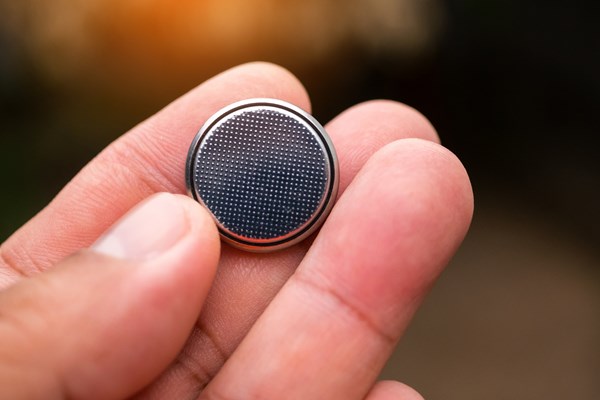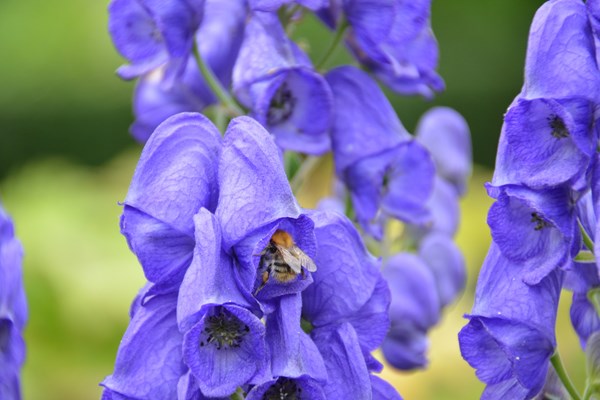Toxic Items and Harmful Plants
A significant part of ensuring a space is safe for children is to consider the risk around items which might not initially appear to us as hazardous. It would be an endless task to consider the vast array of harmful items in our homes and childcare spaces (after all, children do fall over their own feet at times!), therefore this blog will simply focus on two of the more overlooked harmful items which our children may encounter; button batteries and hazardous garden plants. We will consider what the harm could be to children, emergency actions to take and what we can do to minimise the risk of harm.
Button Batteries
Button batteries (which can also be called LR44 batteries, button cell batteries, or coin batteries) can be found in toys, remote controls, car keys, musical greetings cards, musical jumpers/sock, and small electronic devices such as calculators and weighing scales. The most common lithium coin cell batteries powering these products are 20mm in diameter (known as CR2016, CR2025 or CR2032); but 16mm, 23mm and 30mm diameter batteries also exist. This poster from the Child Accident Prevention Trust (CAPT) offers further insight into where you might find button batteries around the home.
In the UK, batteries in children’s toys are covered by toy safety regulations. Battery compartments must either be enclosed by a screw and a secure compartment or need two independent or simultaneous movements to open it. Products from large retailers will meet this safety standard, however manufacturers of cheaper or ‘knock-off’ products will often cut corners on safety standards to keep their production costs low.

If a child swallows a button battery and it gets stuck in their windpipe (trachea), the initial risk is that the child may choke on this obstruction. However, an additional life threatening risk is that the battery may become lodged in the food pipe (oesophagus), where it can burn a hole and cause internal bleeding. Button batteries react with saliva to create caustic soda, which is the chemical often used to unblock drains. If a button battery gets into the stomach, it can also cause significant tissue damage. For further information:
- CAPT released this video in 2022 which shows the internal harm a battery could cause after just a few hours of being in the body.
- A BBC investigation explored the medical science and aftereffects in this news report.
Signs and symptoms of swallowing a button battery may include:
- Vomit fresh (bright red) blood.
- cough, gag or drool a lot
- appear to have a stomach upset or a virus
- point to their throat or tummy
- have a pain in their stomach, chest or throat
- be tired or lethargic
- be quieter or more clingy than usual or otherwise ‘not themselves’
- lose their appetite or have a reduced appetite
not want to eat solid food / be unable to eat solid food.
Advice from the British and Irish Portable Battery Association (BIPBA) suggests the following actions to be taken if you suspect a child has swallowed a battery:
- Take children straight to the A&E department at your local hospital or dial 999 for an ambulance.
- Tell the doctor there that you think your child has swallowed a button battery.
- If you have the battery packaging or the product powered by the battery, take it with you. This will help the doctor identify the type of battery and make treatment easier.
- Do not let your child eat or drink.
- Do not make them sick.
- Trust your instincts and act fast – do not wait to see if any symptoms develop.
For more information on the government button battery safety campaign, please click here.
Harmful plants
Some plants can also be harmful to humans; from a mild irritation to poisonous. Harm could range from skin contact when touching a plant or it’s sap, to ingestion from eating a part of the plant. The good news is that the UK has a relatively low risk of severe poisoning, skin or allergy reaction and with careful management we can reduce this risk to be even lower.
Knowing what plants are in your garden or outside space can allow for accurate risk assessments to be completed and an awareness of the warning signs to look out for if someone were to become unwell. Of course, expecting childcare professionals to also be plant experts is a large ask! However, you can use technology to support you in risk assessing spaces where children access. There are many photo-scanning apps which allow you to take a photo of a plant or leaf to identify the plant name and find out all about the species.
The Horticultural Trades Association (HTA), working with plant toxicologists and the Veterinary Poisons Information Service, review the toxicity of plants sold through nurseries, garden centres and online retailers in the UK. Following the link to the HTA website will lead to a downloadable document with all plant names, their hazardous classification (if any) and information on the risks which come with each plant.
For additional information on health and safety in the garden, the Royal Horticultural Society (RHS) offers an information sheet and pre-populated risk assessment which you might find helpful.

If you think a child or adult has eaten part of a harmful plant, seek medical advice immediately from a hospital Accident & Emergency department. It can be helpful if you take a sample of the plant with you in a secure bag (so you do not also become unwell). Ensure that you remain calm and do not try to make the person vomit as this could cause additional harm as the poison travels back up through the body.